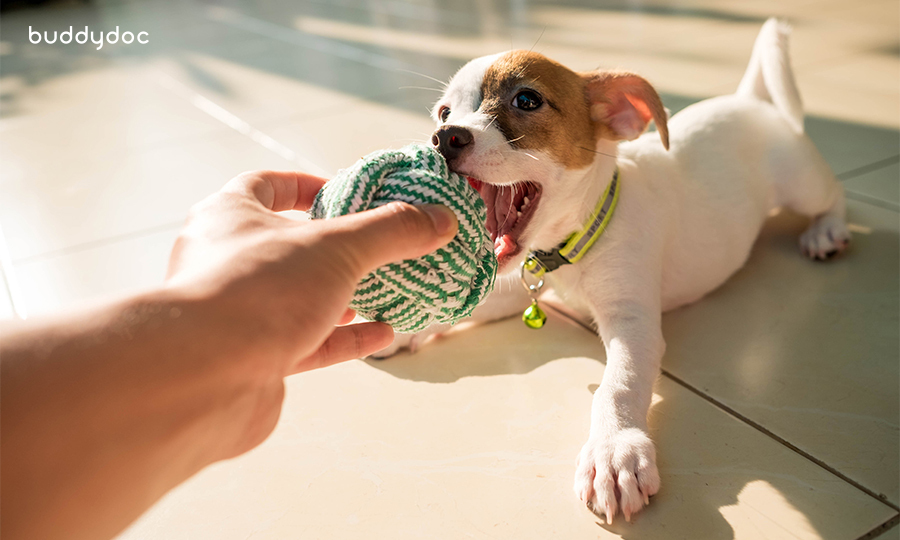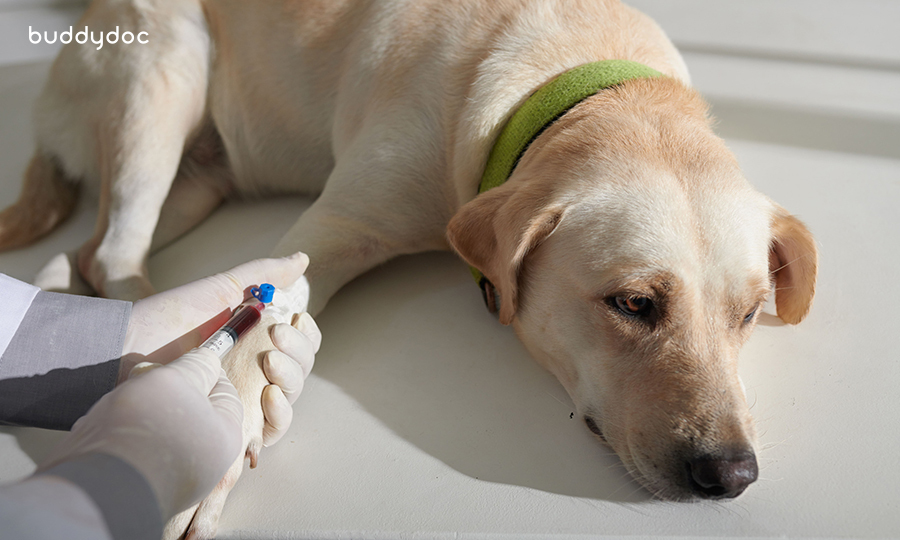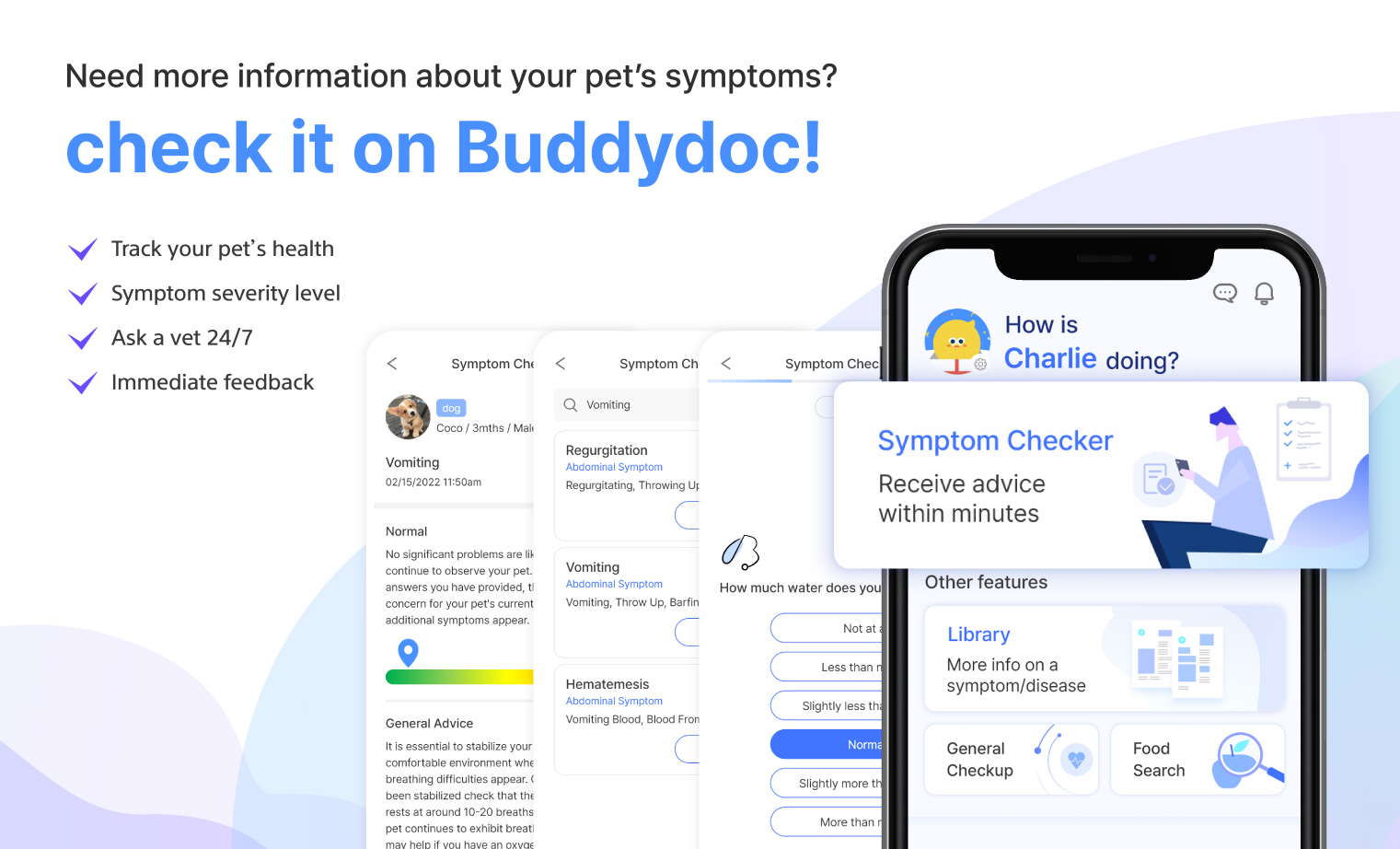SYMPTOMS
Pacing in Dogs - Why is my Dog Pacing and How to Help | Buddydoc
페이지 정보
본문


What is pacing in dogs?
If you notice your dog pacing, it is important to pay attention to accompanying symptoms that can indicate an underlying issue in this seemingly normal symptom. Occasional pacing is natural for dogs, but if it persists over a long period or despite attempts to redirect their attention, it may be a sign of a problem. While some dogs may pace due to anxiety, agitation, or a desire for attention, persistent pacing or pacing accompanied by other symptoms such as weight loss, discolored urine, or excessive thirst could indicate a medical issue. It is important to be observant of your dog's behavior and seek help if the behavior seems unusual or concerning. In such cases, it is best to consult with a veterinarian to determine the cause and receive appropriate treatment.
What causes pacing in dogs?
There are various reasons why a dog may exhibit wandering behavior. This behavior can be a natural expression of curiosity or emotion, or it may indicate an underlying health issue with your pet.
The main causes of pacing behavior in dogs are:
-
Dementia
The aging process or certain medical conditions can cause a reduction in vision or canine cognitive dysfunction, which may lead to behaviors such as pacing and circling.
-
Anxiety
Dogs may experience anxiety that manifests in different ways, such as separation anxiety or fear and occurs when they become overwhelmed with stress and struggle to manage their emotions. This condition can stem from past traumas or negative experiences. To alleviate pacing behavior due to anxiety, medications and professional assistance from a behavioral specialist are available treatments.
-
Boredom
Wandering and pacing behavior can appear to simply relieve boredom in dogs.
-
Vision problems
Vision issues due to aging or disease can cause behaviors such as pacing and wandering to adapt to obstacles and their environment.
-
Pain
If your dog has arthritis or another joint disease, standing or lying down can become more difficult and develop into pacing behavior.
-
Hunger
Hunger can lead to food-seeking behavior which includes pacing.
-
Liver disease
Liver disease is an unexpected but possible cause of abnormal behavior in dogs. The liver plays an important role in filtering toxins from the body, and when it is not functioning properly, these toxins can circulate through the bloodstream and affect the neurological system, causing symptoms such as pacing.
-
Brain Tumor
Brain tumors can have a profound effect on a dog's neurological system and behavior. Older dogs, in particular, are susceptible to developing tumors in the brain or along the brainstem, which can cause abnormal behavior such as pacing and restlessness.
-
Cushing's disease is most commonly seen in older dogs but can occur at any age. Symptoms may include pacing, restlessness, panting, and increased thirst.
Symptoms accompanying pacing behavior in dogs
Depending on the cause of the pacing behavior, various symptoms may be observed together.
-
Behavioral issues
If pacing is simply an expression of emotion, it may be accompanied by other behavioral problems, such as barking and aggressive playing.
-
Underlying disease
When symptoms are caused by an underlying disease, they can often be accompanied by additional clinical symptoms that can vary depending on the disease. If a dog is experiencing pacing symptoms due to Cushing's disease, they may also exhibit additional symptoms such as symmetrical hair loss, bloating, and an increase in appetite and thirst. In some cases, dogs may experience decreased energy levels and a loss of appetite alongside other symptoms.
-
Cognitive dysfunction
Pacing due to cognitive impairment can be caused by various diseases, including liver disease and brain tumors. Pacing is a common symptom that may be accompanied by other signs, such as drooling, zoning out, repetitive circling, ataxia, and seizures. Therefore, it is important to seek veterinary attention if your dog exhibits any of these symptoms, as they may indicate a more serious underlying condition.
The risk in pacing behavior in dogs and when to see a vet
If pacing behavior is accompanied by other clinical symptoms, a visit to the hospital is recommended to determine the exact cause.
You should also see a doctor if you notice any of the following symptoms in your dog:
- Accompanied by drooling, zoning out frequently, head tilting, circling, seizures, etc.
- Loss of energy, loss of appetite, or weight loss
- Increased appetite or thirst
- A bulging belly, symmetrical hair loss, or change in skin quality
- If your dog frequently bumps into obstacles around them or you suspect that they are losing their vision
Home treatments for pacing behavior in dogs

When dealing with pacing behavior in dogs, it is important to identify the underlying cause. If the cause is determined to be boredom or anxiety, improving the surrounding environment can be helpful. This can involve creating a calm and stress-free atmosphere, minimizing loud noises, feeding small amounts of food more frequently to reduce feelings of hunger throughout the day, and providing toys or physical activities to alleviate stress.
If reduced vision is the underlying cause, it is advisable to avoid rearranging furniture, obstacles, and any sharp or hard objects, to prevent injury and further disorientation.
However, if pacing behavior is accompanied by other clinical symptoms or is due to disease or neurological symptoms, it is recommended to visit a veterinarian to determine the exact cause and receive the necessary treatment.
Diagnosing pacing behavior in dogs

In the event that your dog's pacing behavior requires a hospital visit, the veterinarian will conduct a thorough medical examination to assess your dog's overall health condition and symptoms. During this examination, the veterinarian typically asks when the symptoms first appeared and whether there are any accompanying symptoms. Based on this assessment, the veterinarian will select the necessary tests for an accurate diagnosis.
-
Liver function test
If liver problems are suspected, blood will be drawn to check liver function levels. A veterinarian can check the level of certain enzymes and proteins in the blood of your dog’s liver that can help indicate any potential issues.
-
Abdominal radiography
An abdominal radiograph can evaluate the size of the liver. For example, portosystemic shunt (PSS), a vascular malformation, can interfere with detoxification and cause pacing symptoms, and radiography can show the change in the size of your pet’s liver.
-
Abdominal ultrasound
Abdominal ultrasounds can be used to evaluate the condition of the liver and detect blood vessel abnormalities.
-
CT scan
A CT scan can be used to evaluate the liver and detect blood vessel abnormalities in more detail.
-
MRI scan
An MRI scan is an essential test for diagnosing nerve problems. An MRI can be used to check for brain tumors or other masses formed in the brain.
-
ACTH stimulation test
To diagnose Cushing's disease, a blood sample is taken to measure the level of cortisol in your pet’s system.
-
Vision test
Eye function tests can confirm vision changes.
Treatment for pacing behavior in dogs
Treatment will vary depending on the underlying causes of the behavior in your dog. The following treatments are available according to the different causes.
-
Hepatoprotective prescription
If detoxification is not possible due to liver fibrosis, hepatoprotection is prescribed and the progress is observed.
-
Surgery
If the symptom is caused by a portosystemic shunt (PSS), a vascular malformation, surgery is performed to return a normal blood flow.
-
Anti-cancer therapy
For brain tumors, chemotherapy prevents the tumor from growing larger.
-
Cognitive impairment treatment
Drugs such as Chedacure can slow the progression of cognitive impairment.
-
Cushing's disease treatment
In cases of Cushing’s disease, drugs such as trilostane may be prescribed.
-
Sedatives
If separation anxiety is severe, sedatives can be prescribed to reduce anxiety.
Preventing pacing behavior in dogs
You can help prevent pacing in dogs without an underlying cause, by enriching their environment and lifestyle. Ensure that you provide enough activity and exercise to help relieve their stress. Toys and puzzles can also help with relieving their boredom and stress levels. Proper nutrition in a balanced diet and conducting regular veterinary check-ups are essential in preventing any underlying issues from exacerbating. If your dog is experiencing severe anxiety, it may be necessary to consult with a behavioral specialist.
Find out more about your dog’s symptoms and diseases on the Buddydoc app!

The Buddydoc library is filled with everything you’d want to know about each symptom and disease your pet may experience. If you would like to find out more about the causes, signs, treatments, preventions, and more for your dog’s disease. Try out the Buddydoc app and search for your pet’s symptoms or diseases in the Buddydoc library.













